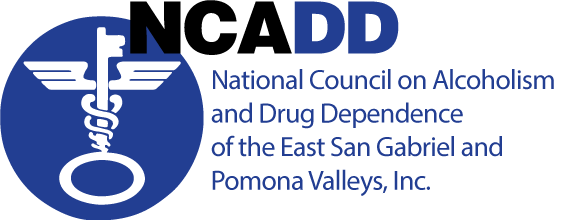NCADD ESGPV Blog
Suffolk County: Highest Rate of Overdose Deaths in New York State
Opioid misuse and overdose deaths in the United States have been rising for two decades. Between 2000 and 2013, the opioid overdose rate—among all ages, races, genders, and ethnicities—nearly quadrupled, increasing from 0.7 to 2.7 deaths per 100,000 individuals. Drug overdose is now the single greatest cause of unintentional deaths in America.
Suffolk County, in downstate New York, has been hit particularly hard. With 337 heroin-related deaths between 2009 and 2013, Suffolk County reported more such deaths than any other county in New York State. And in 2014, the age-adjusted opioid-related death rate in Suffolk County was 12.6 per 100,000, compared to the New York State average of 7.2 per 100,000. This article explores why Suffolk County residents are at greater risk for overdose deaths and, more important, how they are now protecting themselves.
The Community
Suffolk County occupies the easternmost two-thirds of Long Island. Its population size of 1.5 million is larger than that of several individual states (Vermont, Rhode Island, Delaware, North & South Dakota, Montana, Wyoming, and Alaska). Compared to the rest of New York State, Suffolk County residents are generally more prosperous (inflation-adjusted median annual household income $85,886 in 2014; third highest of New York’s 62 counties) and less diverse. The income gap between the county’s upper and lower socioeconomic classes is smaller than the state average. In 2015, 68.6 percent of Suffolk County identified as “non-Hispanic white,” compared to 56.0 percent for New York State.
Suffolk and Opioids
The high percentage of Caucasians in Suffolk County may help to explain that county’s high rate of opioid deaths. The following graph of national statistics from a Centers for Disease Control and Prevention (CDC) publication shows that, between 2000 and 2013, the most dramatic jump in heroin-related overdoses was in non-Hispanic white persons aged 18 to 44. New York State statistics are similar—in 2014, the heroin-related mortality rate for all residents of New York State was 6.5 per 100,000, whereas the rate for only non-Hispanic whites was significantly higher (9 per 100,000).

“Drug-Poisoning Deaths Involving Heroin: United States, 2000-2013.” Holly Hedegaard, Li-Hui Chen, & Margaret Warner. NCHS Data Brief #190, March 2015. http://www.cdc.gov/nchs/data/databriefs/db190.htm
One reason non-Hispanic white individuals may be predisposed to issues with opioids is that they have greater access to opioids, at least after being treated in emergency departments. Both before and after the increase in opioid prescribing in the 1990s, studies have shown that white people (31 percent) are more likely to receive opioids for pain management than black or Hispanic people (23 and 24 percent, respectively).
The comparative wealth of Suffolk County residents may also be a factor. Without a prescription, opioid pain medicines are expensive, around one dollar per milligram on the street. Disposable income makes all illegal drugs more accessible.
What’s Being Done?
Health care providers, social workers, and other concerned citizens in Suffolk County are forming coalitions to address the opioid epidemic. Members of the Long Island Congregations, Associations, & Neighborhoods (LI-CAN) and Long Island Recovery Association (LIRA) created the Opioid Action Team (OAT) and organized the “Student Summit”—an annual meeting of eight school districts in the Town of Huntington. The one-day Student Summit exposes students and their parents to guest speakers, role-playing exercises, and training on the use of naloxone (Narcan) to treat overdoses. Parents learn, for example, that some kids begin experimenting with drugs as early as 4th or 5th grade. Parents and students become better able to talk with one another about this difficult subject. Anyone using opioids is encouraged to find an adult they can talk to who won’t judge or disown them. The Student Summit reduces stigma and shame, teaches safety and responsibility, and promotes open lines of communication.
The OAT is also developing a “Listening Campaign” to engage congregations and neighbors in discussion and action on this epidemic. Leaders of faith organizations on Long Island are encouraged to organize one-on-one sessions, small group discussions, and town hall forums on this topic. The hope is for community members to share stories, vent grievances, express frustrations, and collaborate on solutions.
The Listening Campaign may gain momentum as more Suffolk County residents realize that they lead the state in opioid-related deaths. The campaign has the potential to reduce stigma in the community, which can help people in need to seek treatment. At a recent OAT meeting, a priest described a woman with addiction who was afraid to visit her church or seek help due to shame and the fear that her religious community would reject her.
The OAT hopes to identify information and resources the community needs, stressors that make Suffolk’s young people more vulnerable to addiction, and strategies to help prevent unnecessary deaths. Eventually, the OAT hopes to host a community-wide Day of Remembrance, Reflection, Action, and Accountability that will merge Suffolk County’s faith-based religious congregations, students and parents from public and private schools, and people in recovery from addiction.
Communities elsewhere may benefit not only from what Suffolk County residents learn, but also by emulating their process for learning it.
Data in this article were gathered using the following resources:
The NCADD Addiction Medicine Update provides NCADD Affiliates and the public with authoritative information and commentary on specific medical and scientific topics pertaining to addiction and recovery.
When you subscribe to the blog, we will send you an e-mail when there are new updates on the site so you wouldn't miss them.


Comments